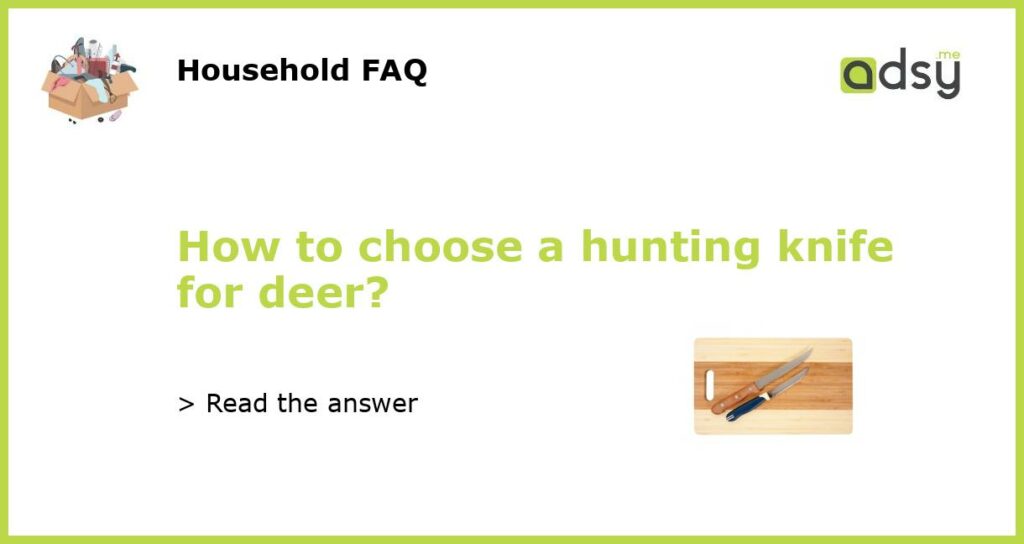Understanding the importance of a hunting knife for deer
If you are a hunting enthusiast, then you know how important it is to have the right gear when you go out to hunt. A hunting knife is one of the most important tools that you should have in your gear. It is an essential equipment that every hunter must have, and it is important to choose the right hunting knife for the job. This article will walk you through the different factors you should consider when selecting a hunting knife for deer.
Know the types of blades
The first thing you need to consider when choosing a hunting knife for deer is the type of blade you want. There are different types of blades used for hunting, which include drop point, clip point, and skinning blades. The drop point blade is the most versatile one, and it is suitable for general hunting purposes. The clip point blade has a sharper and thinner tip than the drop point blade and is best for making precise cuts. The skinning blade, as its name suggests, is used for skinning game. Therefore, knowing what you intend to use the knife for will help you choose the right blade.
Determine the blade size and material
Another factor to consider when choosing a hunting knife for deer is the blade size and material. Blade sizes range from small to large, and the right size depends on the type of hunting you intend to do. For deer hunting, you should go for a blade that is at least 3 inches long. The blade material is also essential, and you should consider factors such as durability, corrosion resistance, and ease of sharpening. Stainless steel and high carbon steel are good options for hunting knives.
Consider the handle
The handle of a hunting knife is the part that you hold onto, and it is important to choose a comfortable and sturdy one. Handles can be made from materials such as wood, plastic, and rubber, and each material has its advantages and disadvantages. Wooden handles are aesthetically pleasing, but they require maintenance. Plastic handles are lightweight, but they can be slippery when wet. Rubber handles provide a good grip, but they are not as durable as other materials. Ultimately, choose a handle that fits comfortably in your hand and complements the blade.
Check the sheath
The sheath is the cover that protects the blade and keeps it secure when not in use. It is important to choose a sheath that is durable and fits the knife well. Leather sheaths are a popular option, but they require maintenance. Kydex and nylon sheaths are also good options, and they are low maintenance. It is important to choose a sheath that has a secure fastening system to prevent the blade from falling out when you are carrying it.






